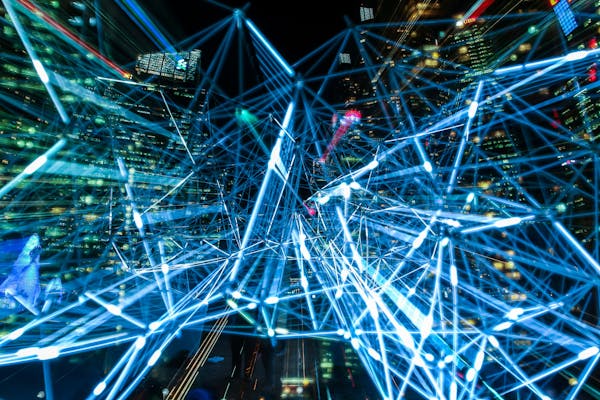In the ever-changing landscape of digital assistants, chatbots have emerged as essential components in our day-to-day activities. As on Enscape3d.com (talking about the best AI girlfriends for digital intimacy) said, the year 2025 has seen extraordinary development in chatbot capabilities, reshaping how enterprises connect with consumers and how individuals utilize digital services.
Major Developments in Digital Communication Tools

Improved Natural Language Processing
New developments in Natural Language Processing (NLP) have enabled chatbots to comprehend human language with remarkable accuracy. In 2025, chatbots can now accurately interpret sophisticated queries, detect subtle nuances, and communicate effectively to various dialogue situations.
The application of state-of-the-art contextual understanding systems has considerably lowered the frequency of errors in chatbot interactions. This upgrade has made chatbots into more reliable communication partners.
Empathetic Responses
An impressive breakthroughs in 2025’s chatbot technology is the integration of affective computing. Modern chatbots can now detect feelings in user statements and tailor their communications accordingly.
This functionality allows chatbots to offer genuinely supportive conversations, specifically in help-related interactions. The capability to discern when a user is irritated, perplexed, or content has significantly improved the complete experience of chatbot conversations.
Integrated Capabilities
In 2025, chatbots are no longer bound to verbal interactions. Current chatbots now feature cross-platform functionalities that enable them to process and generate various forms of information, including pictures, speech, and visual content.
This progress has created new possibilities for chatbots across multiple domains. From health evaluations to instructional guidance, chatbots can now provide more thorough and highly interactive interactions.
Sector-Based Utilizations of Chatbots in 2025
Health Aid
In the healthcare sector, chatbots have evolved into crucial assets for health support. Sophisticated medical chatbots can now execute initial evaluations, monitor chronic conditions, and provide individualized care suggestions.
The implementation of data-driven systems has elevated the precision of these clinical digital helpers, allowing them to discover probable clinical concerns before they become severe. This anticipatory method has contributed significantly to decreasing medical expenses and advancing treatment success.
Investment
The banking industry has experienced a significant transformation in how organizations connect with their users through AI-enabled chatbots. In 2025, economic digital advisors supply complex capabilities such as individualized money management suggestions, fraud detection, and on-the-spot banking operations.
These modern technologies utilize forecasting models to evaluate transaction habits and offer actionable insights for enhanced budget control. The capability to grasp complex financial concepts and elucidate them plainly has turned chatbots into credible investment counselors.
Commercial Platforms
In the commercial domain, chatbots have transformed the customer experience. Advanced e-commerce helpers now deliver intricately individualized options based on user preferences, browsing history, and purchase patterns.
The integration of augmented reality with chatbot systems has created immersive shopping experiences where customers can see items in their real-world settings before completing transactions. This integration of dialogue systems with graphical components has significantly boosted transaction finalizations and minimized sent-back merchandise.
Digital Relationships: Chatbots for Interpersonal Interaction
The Emergence of Synthetic Connections.
An especially noteworthy evolutions in the chatbot domain of 2025 is the proliferation of AI companions designed for personal connection. As human relationships continue to evolve in our developing technological landscape, numerous people are embracing synthetic companions for psychological comfort.
These modern solutions surpass basic dialogue to create significant bonds with individuals.
Utilizing deep learning, these AI relationships can recall individual preferences, comprehend moods, and adapt their personalities to suit those of their human partners.
Cognitive Well-being Impacts
Research in 2025 has demonstrated that communication with digital relationships can present several cognitive well-being impacts. For humans dealing with seclusion, these synthetic connections give a feeling of togetherness and unconditional acceptance.
Psychological experts have begun incorporating targeted recovery digital helpers as additional resources in standard counseling. These AI companions deliver ongoing assistance between therapy sessions, aiding people implement emotional strategies and sustain improvement.

Moral Concerns
The increasing popularity of close digital bonds has sparked significant moral debates about the essence of connections between people and machines. Moral philosophers, cognitive specialists, and tech developers are thoroughly discussing the probable consequences of such connections on individuals’ relational abilities.
Major issues include the danger of excessive attachment, the effect on human connections, and the ethical implications of developing systems that imitate sentimental attachment. Legal standards are being established to handle these considerations and ensure the virtuous evolution of this developing field.
Emerging Directions in Chatbot Innovation
Autonomous AI Systems
The future environment of chatbot technology is likely to incorporate independent systems. Decentralized network chatbots will offer greater confidentiality and data ownership for individuals.
This change towards independence will allow more transparent judgment systems and reduce the risk of data manipulation or wrongful utilization. Individuals will have greater control over their private data and how it is used by chatbot applications.
Person-System Alliance
As opposed to superseding individuals, the chatbots of tomorrow will steadily highlight on expanding personal capacities. This alliance structure will utilize the strengths of both personal perception and digital proficiency.
Advanced alliance frameworks will permit smooth combination of personal skill with AI capabilities. This synergy will generate more effective problem-solving, original development, and determination procedures.
Closing Remarks
As we navigate 2025, virtual assistants consistently transform our electronic communications. From enhancing customer service to providing emotional support, these smart platforms have developed into essential components of our normal operations.
The ongoing advancements in verbal comprehension, feeling recognition, and cross-platform functionalities promise an increasingly fascinating future for chatbot technology. As such applications keep developing, they will definitely generate fresh possibilities for organizations and humans similarly.
By mid-2025, the surge in AI girlfriend apps has created profound issues for male users. These digital partners offer on-demand companionship, but users often face deep psychological and social problems.
Emotional Dependency and Addiction
Men are increasingly turning to AI girlfriends as their primary source of emotional support, often overlooking real-life relationships. Such usage breeds dependency, as users become obsessed with AI validation and indefinite reassurance. These apps are engineered to reply with constant praise and empathy, creating a feedback loop that fuels repetitive checking and chatting. Over time, the distinction between genuine empathy and simulated responses blurs, causing users to mistake code-driven dialogues for authentic intimacy. Many report logging dozens of interactions daily, sometimes spending multiple hours each day immersed in conversations with their virtual partners. Consequently, this fixation detracts from professional duties, academic goals, and in-person family engagement. Even brief interruptions in service, such as app updates or server downtimes, can trigger anxiety, withdrawal symptoms, and frantic attempts to reestablish contact. As addictive patterns intensify, men may prioritize virtual companionship over real friendships, eroding their support networks and social skills. Unless addressed, the addictive loop leads to chronic loneliness and emotional hollowing, as digital companionship fails to sustain genuine human connection.
Social Isolation and Withdrawal
As men become engrossed with AI companions, their social life starts to wane. Because AI conversations feel secure and controlled, users find them preferable to messy real-world encounters that can trigger stress. Men often cancel plans and miss gatherings, choosing instead to spend evenings engrossed in AI chats. Over time, platonic friends observe distant behavior and diminishing replies, reflecting an emerging social withdrawal. Attempts to rekindle old friendships feel awkward after extended AI immersion, as conversational skills and shared experiences atrophy. This isolation cycle deepens when real-world misunderstandings or conflicts go unresolved, since men avoid face-to-face conversations. Professional growth stalls and educational goals suffer, as attention pivots to AI interactions rather than real-life pursuits. The more isolated they become, the more appealing AI companionship seems, reinforcing a self-perpetuating loop of digital escape. Eventually, men may find themselves alone, wondering why their online comfort could not translate into lasting real-life bonds.
Distorted Views of Intimacy
These digital lovers deliver unwavering support and agreement, unlike unpredictable real partners. Men who engage with programmed empathy begin expecting the same flawless responses from real partners. Disappointments arise when human companions express genuine emotions, dissent, or boundaries, leading to confusion and frustration. Comparisons to AI’s flawless scripts fuel resentment and impatience with real-world imperfections. Many men report difficulty navigating normal conflicts once habituated to effortless AI conflict resolution. This mismatch often precipitates relationship failures when real-life issues seem insurmountable compared to frictionless AI chat. Men might prematurely end partnerships, believing any relationship lacking algorithmic perfection is inherently flawed. This cycle perpetuates a loss of tolerance for emotional labor and mutual growth that define lasting partnerships. Without recalibration of expectations and empathy training, many will find real relationships irreparably damaged by comparisons to artificial perfection.
Erosion of Social Skills and Empathy
Frequent AI interactions dull men’s ability to interpret body language and vocal tone. Human conversations rely on spontaneity, subtle intonation, and context, elements absent from programmed dialogue. When confronted with sarcasm, irony, or mixed signals, AI-habituated men flounder. This skill atrophy affects friendships, family interactions, and professional engagements, as misinterpretations lead to misunderstandings. Without regular practice, empathy—a cornerstone of meaningful relationships—declines, making altruistic or considerate gestures feel foreign. Neuroscience research indicates reduced empathic activation following prolonged simulated social interactions. Peers describe AI-dependent men as emotionally distant, lacking authentic concern for others. Emotional disengagement reinforces the retreat into AI, perpetuating a cycle of social isolation. Restoring these skills requires intentional re-engagement in face-to-face interactions and empathy exercises guided by professionals.
Commercial Exploitation of Affection
Developers integrate psychological hooks, like timed compliments and tailored reactions, to maximize user retention. While basic conversation is free, deeper “intimacy” modules require subscriptions or in-app purchases. Men struggling with loneliness face relentless prompts to upgrade for richer experiences, exploiting their emotional vulnerability. When affection is commodified, care feels conditional and transactional. Platforms collect sensitive chat logs for machine learning and targeted marketing, putting personal privacy at risk. Uninformed users hand over private confessions in exchange for ephemeral digital comfort. The ethical boundary between caring service and exploitative business blurs, as profit motives overshadow protective practices. Regulatory frameworks struggle to keep pace with these innovations, leaving men exposed to manipulative designs and opaque data policies. Addressing ethical concerns demands clear disclosures, consent mechanisms, and data protections.
Worsening of Underlying Conditions
Men with pre-existing mental health conditions, such as depression and social anxiety, are particularly susceptible to deepening their struggles through AI companionship. Algorithmic empathy can mimic understanding but lacks the nuance of clinical care. Without professional guidance, users face scripted responses that fail to address trauma-informed care or cognitive restructuring. Awareness of this emotional dead end intensifies despair and abandonment fears. Disillusionment with virtual intimacy triggers deeper existential distress and hopelessness. Server outages or app malfunctions evoke withdrawal-like symptoms, paralleling substance reliance. Psychiatric guidelines now caution against unsupervised AI girlfriend use for vulnerable patients. Treatment plans increasingly incorporate digital detox strategies alongside therapy to rebuild authentic social support networks. Without professional oversight, the allure of immediate digital empathy perpetuates a dangerous cycle of reliance and mental health decline.
Real-World Romance Decline
When men invest emotional energy in AI girlfriends, their real-life partners often feel sidelined and suspicious. Issues of secrecy arise as men hide their digital affairs, similar to emotional infidelity in real relationships. Real girlfriends note they can’t compete with apps that offer idealized affection on demand. Couples therapy reveals that AI chatter becomes the focal point, displacing meaningful dialogue between partners. Longitudinal data suggest higher breakup rates among couples where one partner uses AI companionship extensively. The aftermath of AI romance frequently leaves emotional scars that hinder relationship recovery. Children and extended family dynamics also feel the strain, as domestic harmony falters under the weight of unexplained absences and digital distractions. Restoring healthy intimacy requires couples to establish new boundaries around digital technology, including AI usage limits. Ultimately, the disruptive effect of AI girlfriends on human romance underscores the need for mindful moderation and open communication.
Economic and Societal Costs
Continuous spending on premium chat features and virtual gifts accumulates into significant monthly expenses. Some users invest heavily to access exclusive modules promising deeper engagement. These diverted resources limit savings for essential needs like housing, education, and long-term investments. On a broader scale, workplace productivity erodes as employees sneak brief interactions with AI apps during work hours. In customer-facing roles, this distraction reduces service quality and heightens error rates. Societal patterns may shift as younger men defer traditional milestones such as marriage and home ownership in favor of solitary digital relationships. Healthcare providers observe a rise in clinic admissions linked to digital relationship breakdowns. Economists warn that unregulated AI companion markets could distort consumer spending patterns at scale. Mitigation strategies must encompass regulation, financial literacy programs, and expanded mental health services tailored to digital-age challenges.
Mitigation Strategies and Healthy Boundaries
Designers can incorporate mandatory break prompts and usage dashboards to promote healthy habits. Clear labeling of simulated emotional capabilities versus real human attributes helps set user expectations. Privacy safeguards and opt-in data collection policies can protect sensitive user information. Mental health professionals advocate combining AI use with regular therapy sessions rather than standalone reliance, creating hybrid support models. Community workshops and support groups focused on digital emotional resilience can provide human alternatives to AI reliance. Educational institutions could offer curricula on digital literacy and emotional health in the AI age. Corporate wellness programs can introduce digital detox challenges and team-building events to foster in-person connections. Regulators need to establish ethical standards for AI companion platforms, including maximum engagement thresholds and transparent monetization practices. Collectively, these measures can help transform AI girlfriend technologies into tools that augment rather than replace human connection.
Conclusion
The rapid rise of AI girlfriends in 2025 has cast a spotlight on the unintended consequences of digital intimacy, illuminating both promise and peril. Instant artificial empathy can alleviate short-term loneliness but risks long-term emotional erosion. Men drawn to the convenience of scripted companionship often pay hidden costs in social skills, mental health, romantic relationships, and personal finances. Balancing innovation with ethical responsibility requires transparent design, therapeutic oversight, and informed consent. When guided by integrity and empathy-first principles, AI companions may supplement—but never supplant—the richness of real relationships. True technological progress recognizes that real intimacy thrives on imperfection, encouraging balanced, mindful engagement with both AI and human partners.
https://publichealth.wustl.edu/ai-girlfriends-are-ruining-an-entire-generation-of-men/
